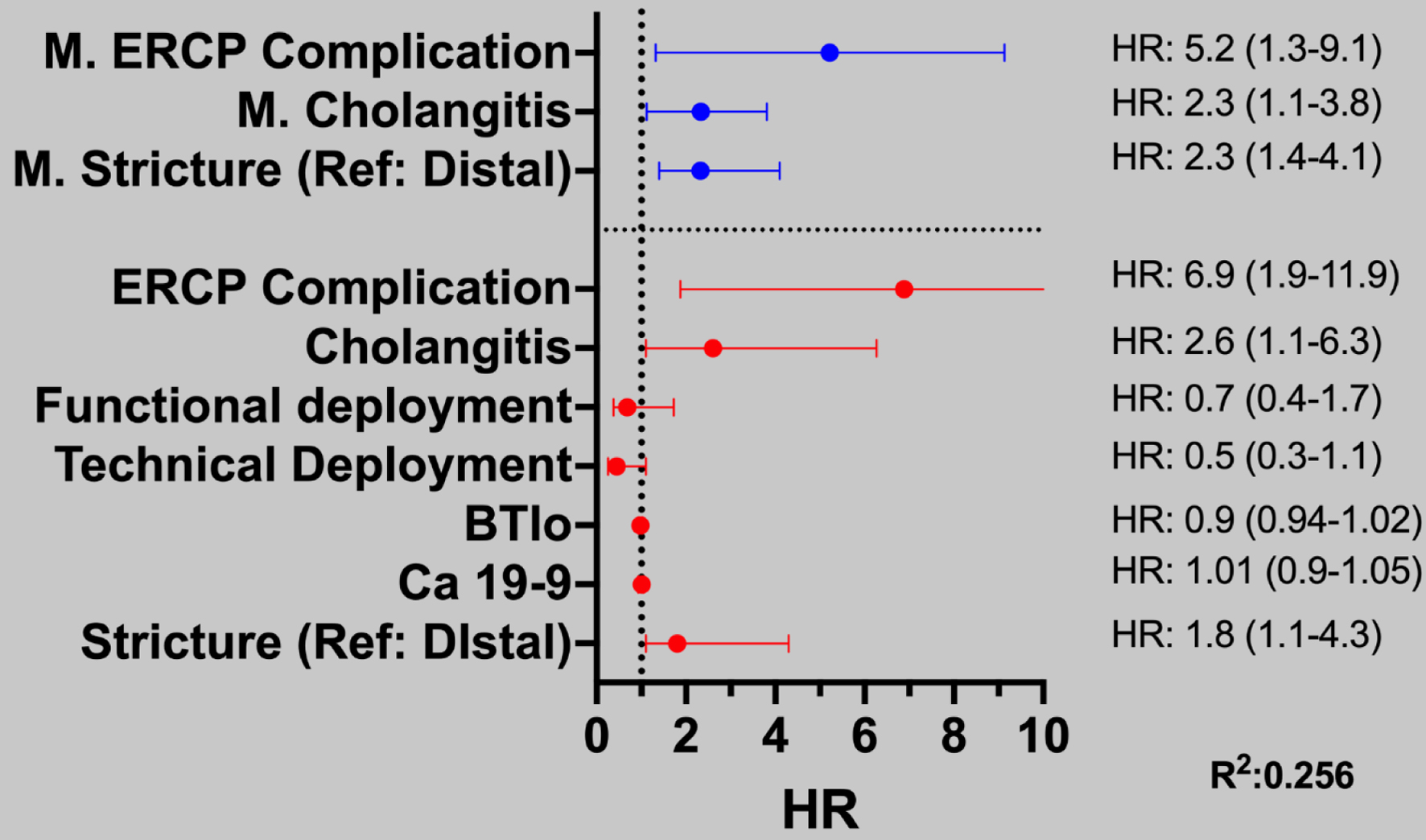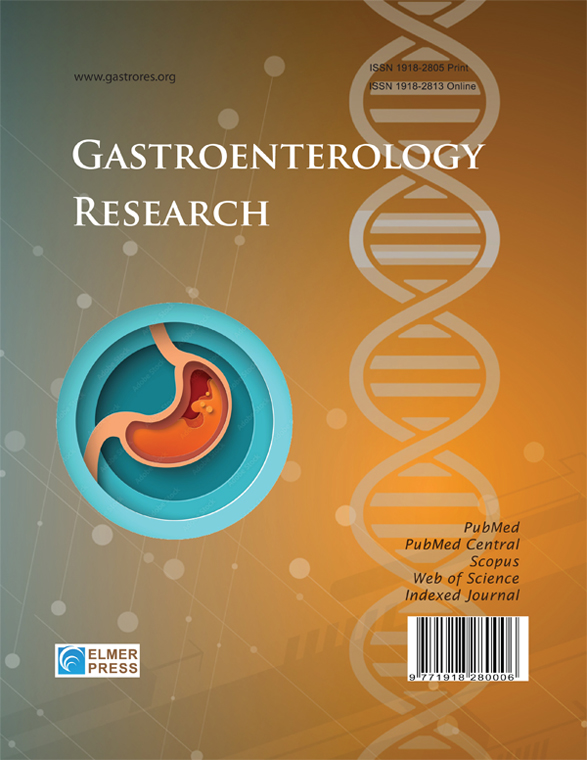Endoscopic Biliary Drainage in Malignant Biliary Strictures: A Prospective Analysis Based on Real-World Data
DOI:
https://doi.org/10.14740/gr2046Keywords:
Endoscopic stenting, Malignant, Biliary stricture, CholangiocarcinomaAbstract
Background: Endoscopic biliary drainage has emerged as the standard treatment for palliative drainage in malignant biliary strictures (MBS).
Methods: This prospective study aimed to investigate the outcomes of patients diagnosed with MBS who underwent biliary drainage through endoscopic retrograde cholangiopancreatography (ERCP) at Complejo Hospitalario Metropolitano. The primary goals were to evaluate the stent dysfunction (SD) and mortality over a 12-month follow-up period. We evaluated the technical and functional deployment success rates according to the stricture location and type of stent used.
Results: Out of 191 patients screened, 147 were eligible for inclusion. Distal strictures exhibited significantly higher technical (96.3%) and functional (75.8%) success deployment rates compared to hilar strictures (32.4% technical, 58.8% functional). The overall incidence of SD reached 46.9%, while mortality was 43.5%. Notably, complications varied by stricture type, with bacteremia predominating in hilar stricture cases.
Conclusion: The findings from our prospective study affirm a commendably high rate of successful endoscopic stenting interventions along with a lower incidence of adverse events in patients suffering from MBS. Conversely, it is imperative to acknowledge that the endoscopic management of malignant hilar strictures necessitates a more individualized approach due to the elevated complication rates and increased likelihood of SD observed in our study.

Published
Issue
Section
License
Copyright (c) 2025 The authors

This work is licensed under a Creative Commons Attribution-NonCommercial 4.0 International License.









